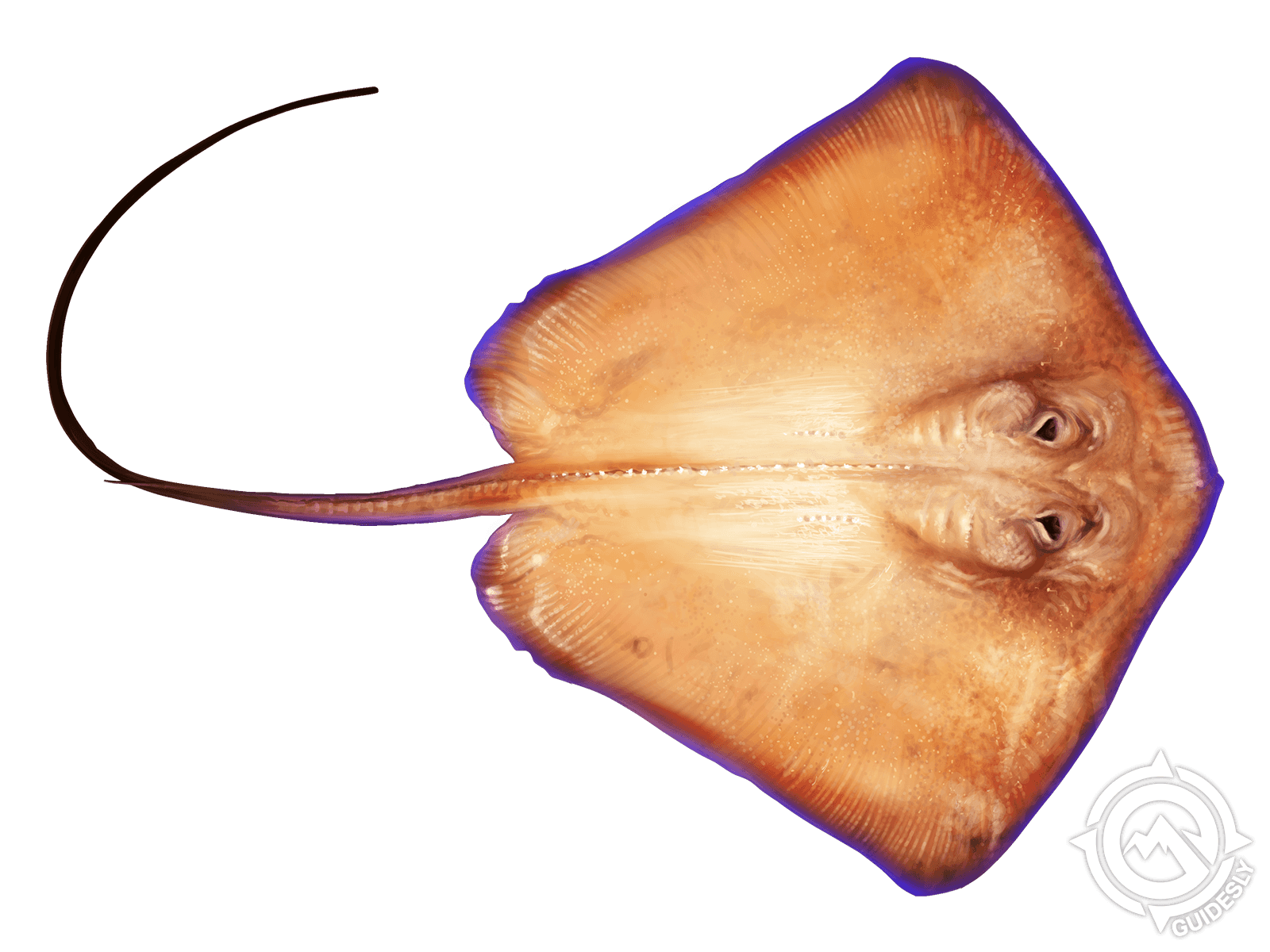Southern Stingray

Species Details
Hypanus Americanus
Dasyatidae
Myliobatiformes
Ocean Beaches, Offshore, Nearshore, Bays, Estuaries
50 - 200 lbs.
60" - 79"
Southern Stingray (Hypanus americanus) Fish Description
A whiptail-type stingray, the Southern Stingray is known for the poison barb on its tail. The tail is covered with a venomous mucous that it only uses for self-defense. Onsight, it looks like any typical stingray. It lies flat on its back and looks like a kite in the sea. Unlike most stingrays, however, the Sting Ray has more corners making it look a little more angular.
They are usually known for propelling or gliding themselves across the ocean floor using their “wings”. While they do have spines, they don’t normally use them. Except, if someone steps on them. Color-wise, their backs are brown but their bellies are white as a form of countershading.
Diet and Size
Sting Rays are foragers. They’re opportunistic and are known to eat a variety of prey. They find their prey by flapping their wings and brushing away the sand. There, they can find small crustaceans, small fishes, and sometimes worms.
There appears to be a difference between males and females. Female Southern Stingrays are known to be bigger than males. Male Southern Stingrays can grow up to 26 inches whereas females can grow up to 59 inches (almost 6 ft long)! They can weigh as heavy as 50 lbs.
Interesting Facts About the Southern Stingray
- The main predators of the Southern Stingray include humans and Hammerhead Sharks.
- Southern Stingrays are quite patient with humans and can even be fed by hand.
- Some say it has a negative impact on the ecology when done often, however.
- Southern Stingrays have the ability to detect other fish through electric fields.
- They have a part of their body known as the Ampullae of Lorenzini which allows them to detect the electrical fields of other fish underwater.
- They don’t appear to be aggressive. Usually, they will hide under the sand and flash their venomous tail to ward of predators.
- Southern Stingrays have a strong sense of smell.
- Female Southern Stingrays can immediately mate after giving birth.
- Southern Stingrays give birth to live young.
Fishing Techniques: How to Fish for a Southern Stingray
To attract them, some recommend using live bait. Using Pinfish or smaller fishes will attract them to you. Once you’ve thrown in some of the Pinfish on the hook, you have to lure it to you. Lead it carefully to shore and make sure you don’t lead it towards your feet. Leading a Southern Stingray towards your feet’s bound to get your feet covered with some nasty wounds.
Next, don’t just reel right away. Reel every now and then. Southern Stingrays will yank back if they feel that the opportunity isn’t worth it. Reel a few inches back every now and then. You can also choose to tug it a bit. Some people even meet it at the shore so that it’s easier for them to lure the Southern Stingray to shore. They can grow big and are heavy creatures so, using a 150-lb braided line will do to bring in these large beasts. Yanking it back will also have you throw your back out so as much as possible, don’t.
Most people go fishing for the Southern Stingray on a pier where they also have a better gauge on how to bring it. It also allows them more ground to lure them to the shore.
Others just resort to Spearfishing.
Habitat and Distribution
Southern Stingrays love ocean beaches and bays. It’s why most people go fishing for the Southern Stingray at a pier. However, they can also be found in river mouths and estuaries. Southern Stingrays also like loitering around sandy and muddy flats. They also have a preference for seagrass also. Rarely do you find them in groups.
Southern Stingrays usually only travel in groups when they’re in the open water where there are a lot of predators such as the Hammerhead Shark.






